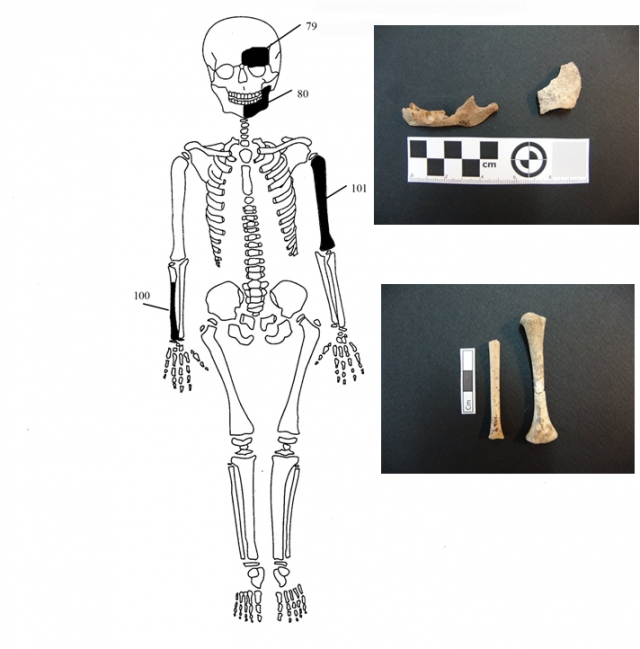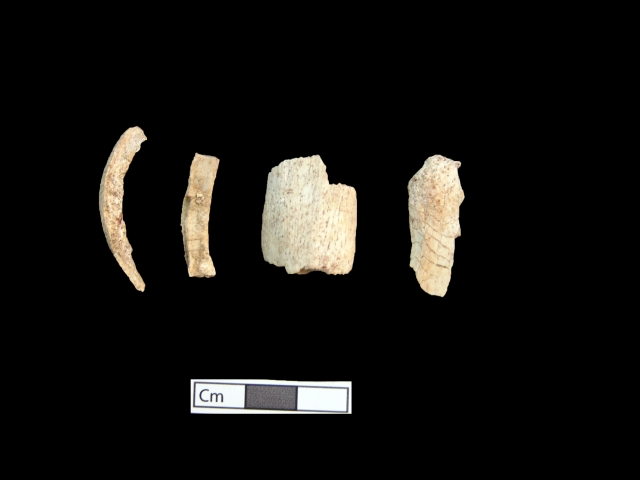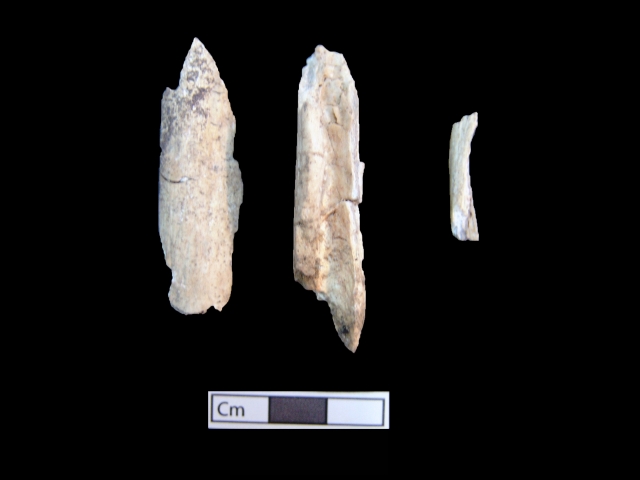The baby’s age is determined by measuring the length and width of the left hand and the lower left jaw. It is not possible to determine the sex of the baby, as the morphological bone characteristics that distinguish the sex are not clearly expressed in newborns.

The fifth skeleton is represented by a very small number of bones, only nine (9), and mainly by the long bones that bear all the deformations and markings (whitish and blue/grey) occurring in the complete burning of a deceased and, most probably, they belong to an adult.

The general condition of the skeletal remains discovered suggests a previous human intervention both in the fourth room of the tomb and the grave itself.

Prospects
In addition to the macroscopic methods, the examination of the skeletal finds discovered in the Kasta tomb will use a number of analytical methods to better prove the initial findings, but also to obtain more complete information on the pathological changes, the diet, the degree of kinship and the birthplace of these people, i.e. if they were born and grew up in Amphipolis or whether they were transferred from another place and were buried in that tomb.
These analytical methods include the following:
• Radiological testing to detect the pathological changes that cannot be established with macroscopic methods and to make a full description of the established conclusions.
• Histological microscopic techniques, in the case of the frontal hyperostosis and where considered appropriate.
• Analyzes of the stable isotopes of carbon and nitrogen in order to determine the type of proteins that these people consumed.
• Analysis of strontium content which, due to the lack of teeth, will be limited to the values obtained from the sampling of bones.
• Paleogenetic analysis (ancient DNA) to describe the biological and genetic history of the persons. This analysis will study the possible consanguinity of the first three. However, the presence of long bones in the graves, the absence of teeth and parts of the skulls of skeletons 2 and 3, which are used in the analysis of ancient DNA, probably will not provide sufficient quantity of nuclear DNA for the successful and accurate identification of consanguinity. As for skeletons 4 and 5, due to the limited amount of bones and the influence of high temperature during the burning of skeleton 5, these methods will not be applied.
• Applying the AMS dating in samples from both human and animal bones will complete the picture of the sequence of the graves, which cannot be restored on the basis of the excavations alone.
Both macroscopic and analytical methods will be applied in a large number of skeletons, about 300, from the necropolis at Amphipolis, within the framework of a two-year research programme funded by the Ministry of Culture and implemented by a large research group, led by Sevi Triandafilou, Professor of Prehistoric Archaeology and Osteoarchaeology at Aristotle University of Thessaloniki and Christina Papageorgopoulou, Professor of Physical Anthropology at Democritus University of Thrace in Komotini. The team involves bachelor, master and doctoral students from both universities and internationally recognized external collaborators.
In this way, valuable comparative material will be obtained that will contribute towards
1) including the skeletal remains discovered in the Kasta tomb in a wider study of the ancient local population,
2) interpreting the results of analytical methods in conjunction with the results of the macroscopic examination of part of the ancient population,
3) showing that anthropological findings should be studied within an archaeological, social and historical context, which is possible only by the systematic study of findings through a common approach to the period in question.